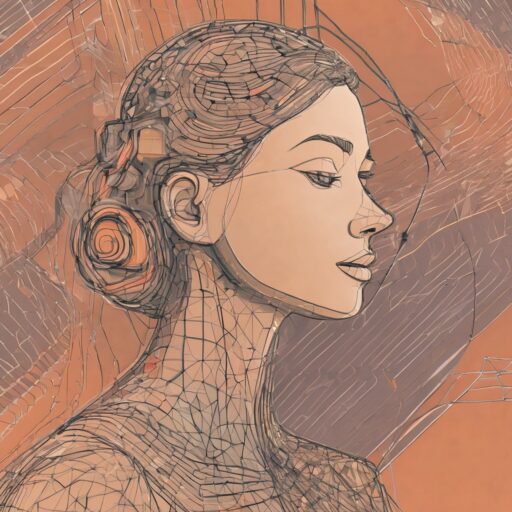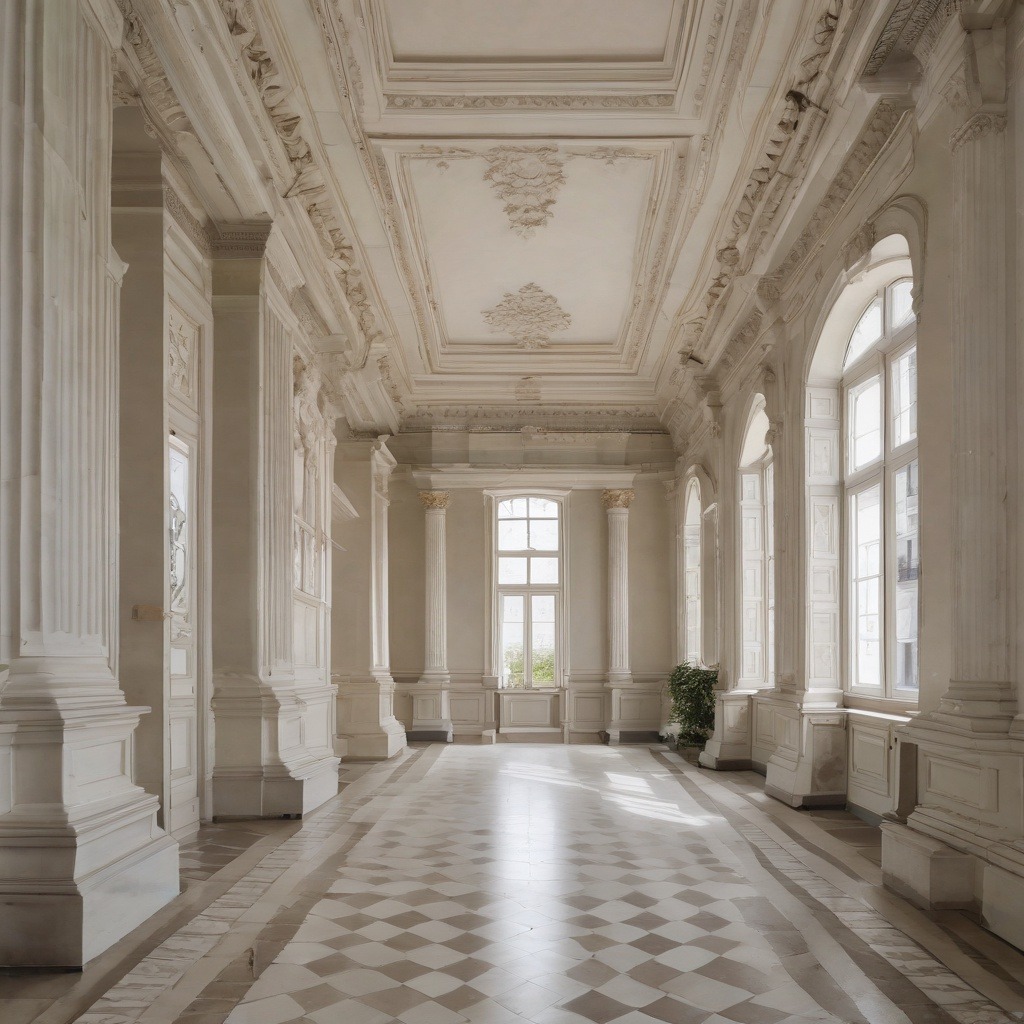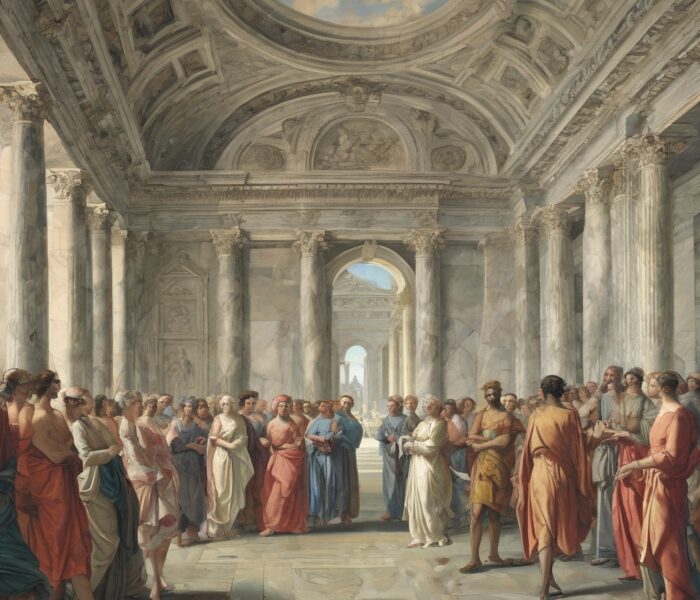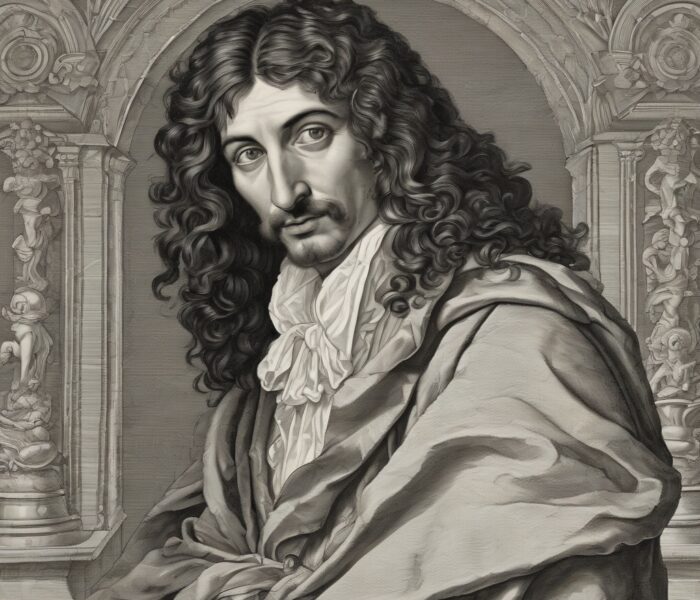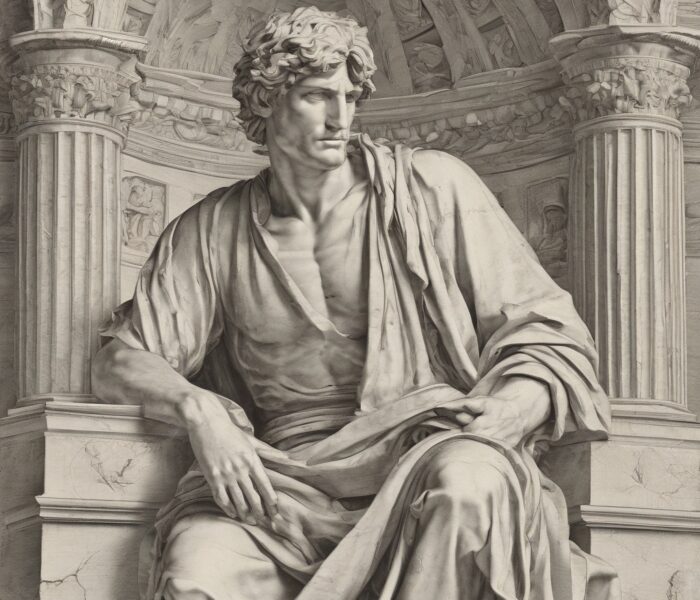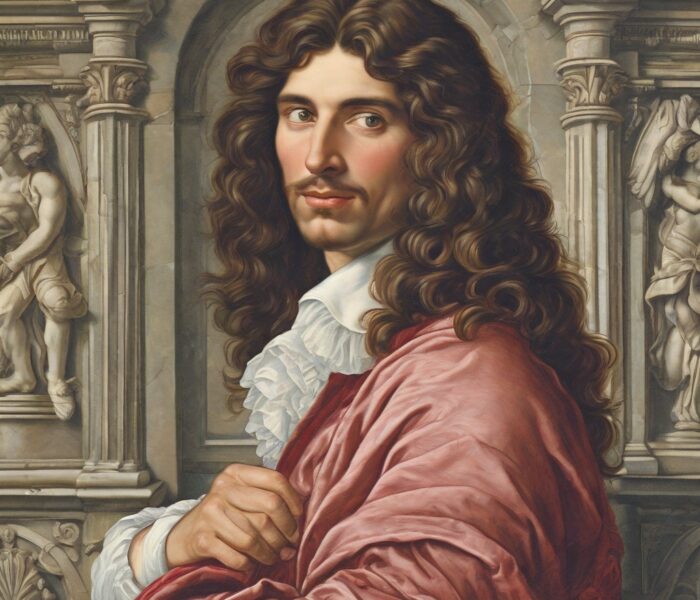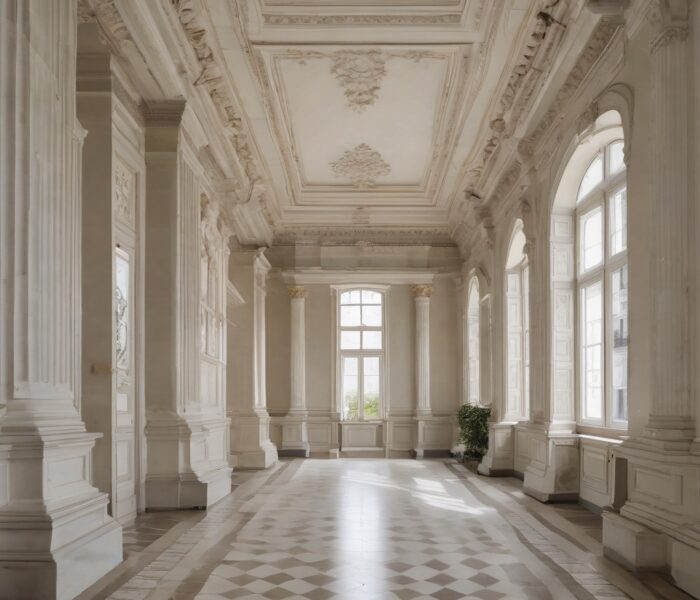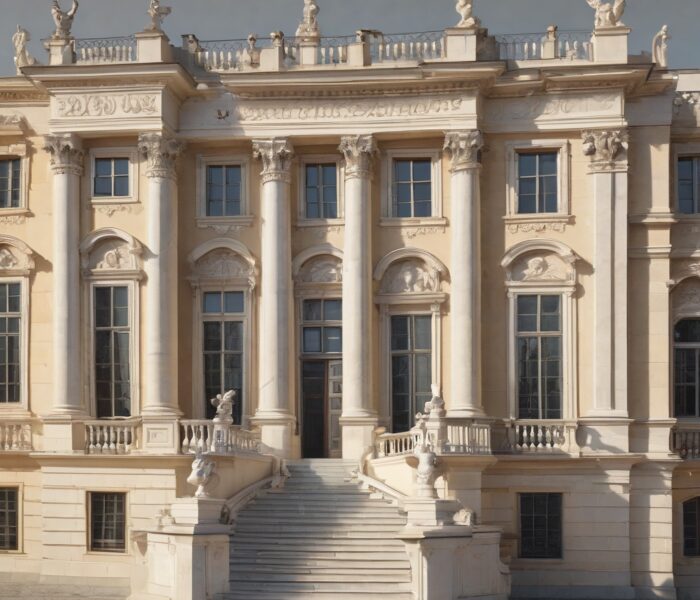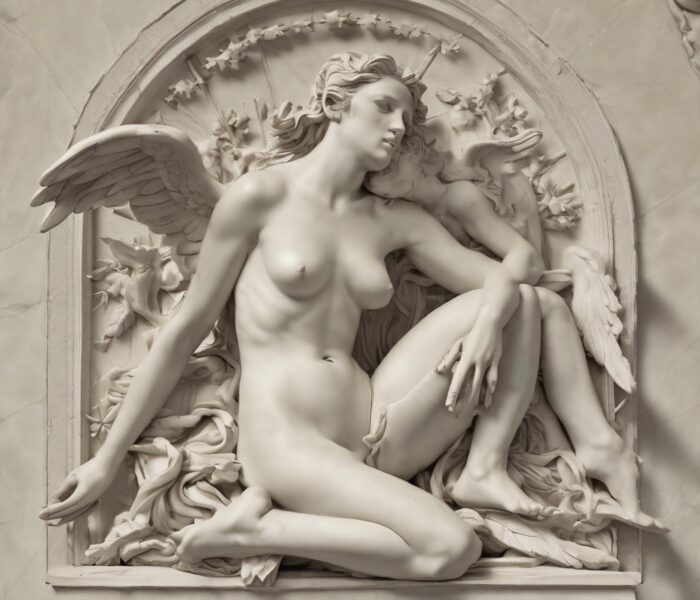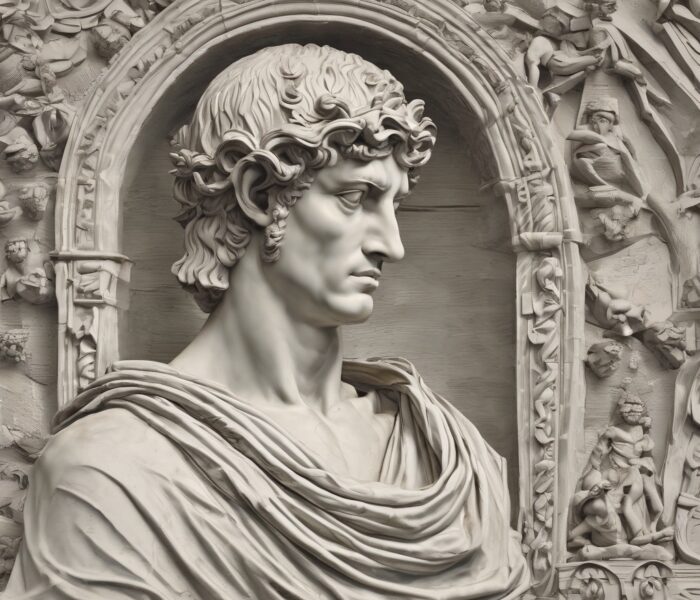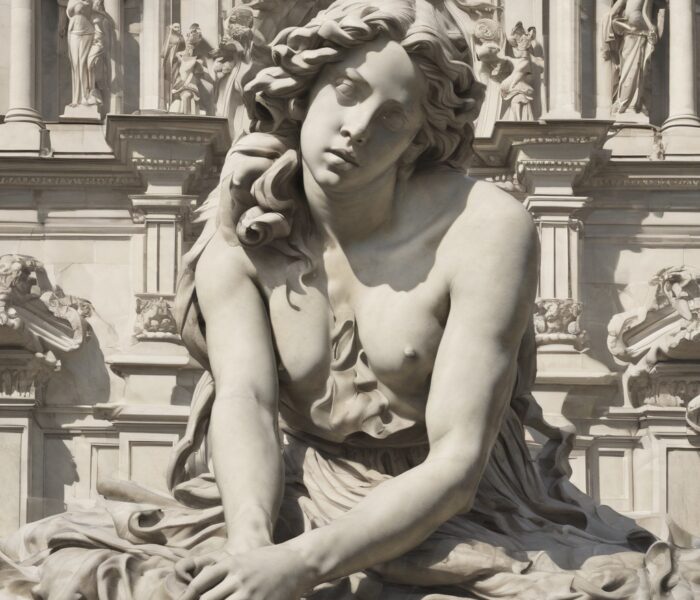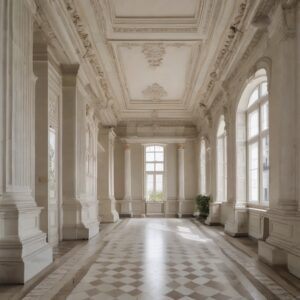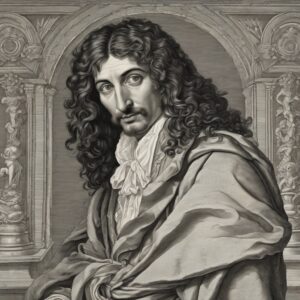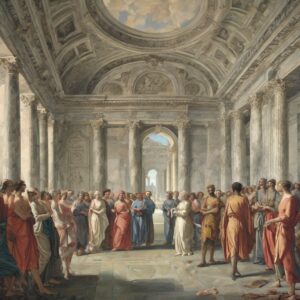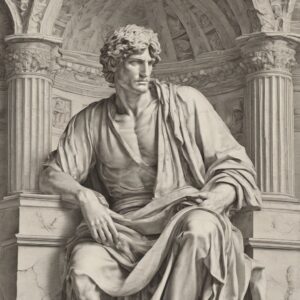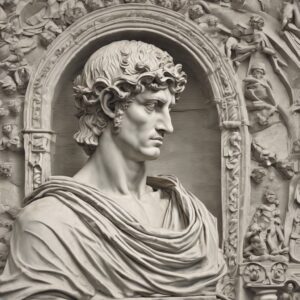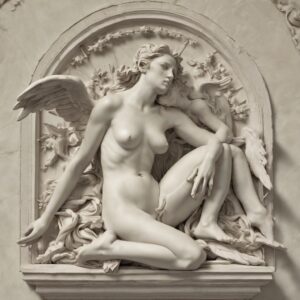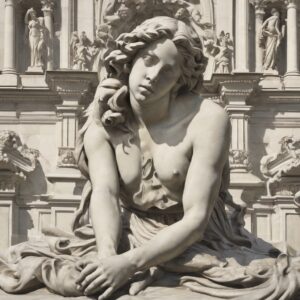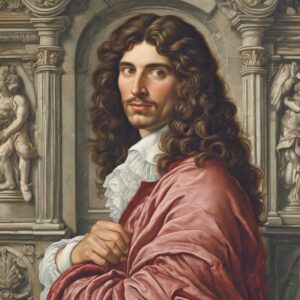Classicism is an art movement that developed in the late developed in Europe in the 18th century and continued into the early 19th century. Inspired by the ideals of antiquity and the Renaissance, classicism strove for harmony, order, and rational beauty. This style of art became widely used in various fields such as painting, sculpture, architecture, and literature, and significantly influenced the cultural development of this era.
The use of generative artificial intelligence (AI) in the context of classicism offers interesting opportunities to explore the characteristic features and styles of this period and to create new works that reflect the aesthetic principles of classicism. Generative AI algorithms can be trained to mimic the stylistic elements and themes of classicism and generate artworks that embody the elegance, symmetry, and rationality of this art style.
An important feature of classicism is the emphasis on elegance and symmetry. Classicist works of art are characterized by clean lines, balanced proportions and a harmonious arrangement of the elements. Generative AI algorithms can learn to grasp these aesthetic principles and generate artworks that have an elegant and symmetrical composition.
Another distinctive feature of classicism is its inspiration from antiquity and the Renaissance. Artists of Classicism took their cue from the works of Greek and Roman antiquity as well as from the masters of the Renaissance such as Michelangelo and Raphael. Generative AI algorithms can learn to recognize classicist motifs and themes and use them in their generated artworks to appreciate the timeless beauty and perfection of antiquity and the Renaissance.
In addition, classicism placed great emphasis on rational expression and moral values. Artists of Classicism strove for a clear representation of ideals such as virtue, heroism and dignity. Generative AI algorithms can learn to capture these moral and philosophical aspects of classicism and generate artworks that convey a subtle message of ethical strength and spiritual grandeur.
Overall, the use of generative AI in the context of classicism offers an intriguing opportunity to explore the basic principles of this art movement and create new works that capture the elegance, symmetry, and rationality of classicism.
When generating the art style of classicism using Artificial Intelligence (AI), there are several important aspects to consider in order to successfully capture the characteristic features and styles of this era:
- Ancient inspiration: Classicism was heavily influenced by the ideals and forms of ancient Greek and Roman art. Generative AI algorithms should learn to analyze ancient works of art and integrate classical motifs, shapes, and symmetries into their generated works.
- Idealization and harmony: Classicist art strove for idealism and harmony, trying to emulate the beauty and perfection of ancient art. Generative AI algorithms should be able to capture these aesthetic principles and generate artworks that exude a balanced composition and a calm, harmonious atmosphere.
- Clarity and simplicity: Classicism favoured clean lines, simple shapes and a reduced colour palette. Generative AI algorithms should learn to capture this minimalist aesthetic and generate works of art that impress with their simplicity and clarity.
- Historical and mythological themes: Classicist artworks often deal with historical, mythological, or religious themes, depicting scenes from Greek and Roman history and mythology. Generative AI algorithms should be able to recognize these topics and adequately represent them in their generated works.
- Precision and realism: Classicist art is characterized by a high level of detail and strict realism. Generative AI algorithms should learn to capture precise details and generate artworks that provide a realistic representation of people, objects, and architecture.
By taking these important aspects into account, generative AI algorithms can create works of art that capture the essence and spirit of classicism and open up new possibilities for creative design. However, it is important to emphasize that the generation of art through AI also raises ethical questions, especially in terms of originality, authorship, and cultural appropriation. Artists using generative AI should ensure that their work meets ethical standards and maintains integrity and authenticity in the art world.
